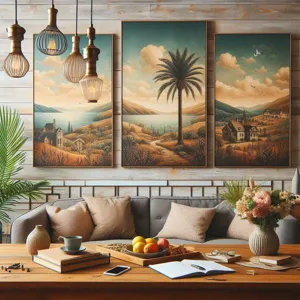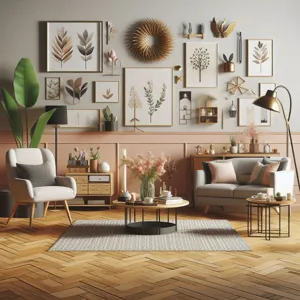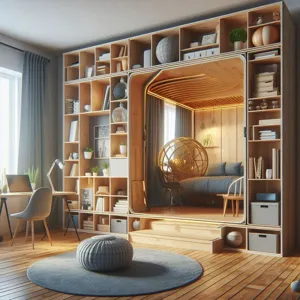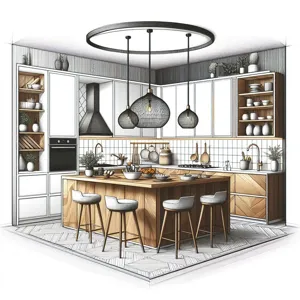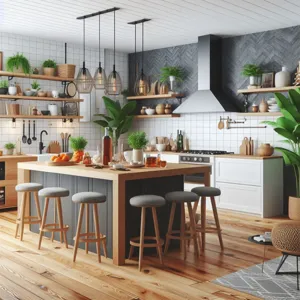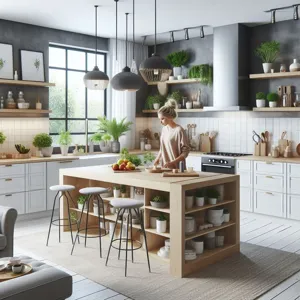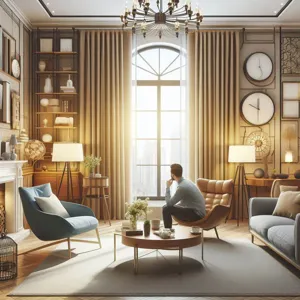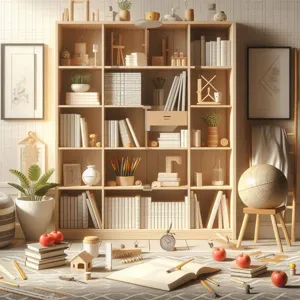Your living room is more than just a space; it’s the heart of your home where laughter echoes, conversations flow, and memories are created.
As the first room guests often see, it reflects your personal style and sets the tone for your entire living space. Choosing the perfect furniture for this vital area can feel overwhelming with countless styles, materials, and layouts to consider. From cozy sofas that invite relaxation to chic coffee tables that serve as functional art pieces, each element plays a crucial role in crafting a harmonious environment. In this ultimate guide, we’ll navigate through the essentials of selecting furniture that not only complements your aesthetic but also enhances comfort and functionality. Whether you’re revamping your existing setup or starting from scratch, we’ll provide you with insightful tips and inspiration to transform your living room into a welcoming sanctuary that truly feels like home.
1. Understanding Your Living Room Needs

Before diving into the world of sofas, coffee tables, and accent chairs, it’s essential to take a step back and truly understand your living room needs. Your living room is often the heart of your home, a space where you gather with family and friends, unwind after a long day, and create lasting memories. Therefore, the furniture you choose should reflect not just your style but also how you intend to use the space.
Begin by assessing the size and layout of your living room. Is it a cozy nook, perfect for intimate gatherings, or a spacious area meant for entertaining larger groups? Measuring your space will help you determine the scale of the furniture pieces that will fit comfortably without overwhelming the room. Consider traffic flow as well; you want to ensure that people can move freely without navigating around bulky furniture.
Next, think about your lifestyle. Do you have kids or pets that require durable, easy-to-clean fabrics? Are you an avid reader who needs ample seating and good lighting for those cozy evenings with a book? Perhaps you love hosting movie nights and need a large sectional to accommodate your guests. Identifying these key activities will guide your selections and help you prioritize functionality alongside aesthetics.
Additionally, consider the mood and atmosphere you want to create in your living room. Are you aiming for a modern look with sleek lines and minimalistic décor, or do you prefer a more traditional vibe with plush fabrics and ornate details? The color palette and style of your furniture should harmonize with the overall theme of your home while also providing a comfortable and inviting environment.
Taking the time to fully understand your living room needs will not only streamline your furniture shopping experience but also ensure that you select pieces that enhance your lifestyle and create a welcoming space for all who enter. With a clear vision in mind, you’ll be well-equipped to choose furniture that not only looks great but also serves you and your family well for years to come.
2. Defining Your Style: Modern, Traditional, or Eclectic?
Defining your style is one of the most exciting yet challenging steps in choosing furniture for your living room. Your living space is a reflection of your personality, and the style you choose will set the tone for every gathering, family moment, and quiet evening at home.
**Modern** furniture typically features clean lines, minimalistic designs, and a neutral color palette. Think sleek sofas with geometric shapes, glass coffee tables, and metal accents. If you’re drawn to simplicity and functionality, a modern aesthetic can create a serene and uncluttered atmosphere. Consider incorporating statement pieces like a bold, abstract painting or a uniquely shaped chair to add character without overwhelming the space.
On the other end of the spectrum, **Traditional** style embraces classic design elements, showcasing ornate details and rich, warm colors. Here, you might opt for plush, upholstered sofas, intricately carved wooden furniture, and elegant fabrics like velvet or silk. Accessories play a key role in traditional design—think about adding vintage lamps, framed family portraits, or decorative throw pillows that echo historical patterns. This style exudes comfort and nostalgia, making it perfect for creating an inviting environment.
If you find yourself inspired by a mix of influences, then an **Eclectic** style might be the perfect fit. This approach allows you to blend various styles, textures, and colors to create a unique and personalized space. An eclectic living room could feature a mid-century modern sofa paired with a vintage coffee table and bold art pieces from different cultures. The key is balance; while mixing styles, ensure that your choices harmonize through common colors or themes. This will not only showcase your creativity but also make your living room feel lively and dynamic.
As you define your style, take the time to explore different sources of inspiration—magazines, websites, or even social media platforms like Pinterest. Remember, your living room is where you’ll spend countless hours with family and friends, so selecting a style that resonates with you is essential for creating a space that feels like home.
3. Measuring Your Space: Tips for Accurate Dimensions

When it comes to selecting the perfect furniture for your living room, measuring your space accurately is a crucial step that can make or break your design vision. Nothing feels more disappointing than purchasing a stunning sofa or a chic coffee table only to find that it overwhelms the room or, conversely, gets lost in the expansive space. To avoid these pitfalls, follow these tips for taking accurate dimensions.
**Start with a Floor Plan**: Begin by sketching a simple floor plan of your living room. Include doors, windows, and any architectural features like fireplaces or built-in shelves. This visual representation will help you understand the layout and flow of the space.
**Use a Tape Measure**: Armed with a tape measure, carefully measure the length and width of your room. Don’t forget to account for ceiling height, especially if you’re considering tall bookshelves or floor lamps that could affect the room’s proportions.
**Consider Scale and Proportions**: When measuring potential furniture pieces, keep scale in mind. A large sectional can dominate a small space, while dainty pieces may seem insignificant in a cavernous living room. A good rule of thumb is to maintain a balance—allow for walking paths of at least 18 inches between furniture to ensure comfort and accessibility.
**Mock It Up**: If you’re unsure how a piece will fit, consider using painter’s tape to outline the dimensions of the furniture on your floor. This visual aid can provide a clearer picture of how the furniture will occupy the space and help you visualize the arrangement before making a purchase.
**Think About Functionality**: Beyond just fitting in the space, think about how you intend to use your living room. Will you be entertaining guests, enjoying family movie nights, or creating a cozy reading nook? This understanding will guide your furniture choices and help you decide on the number of pieces you need, their size, and their arrangement.
By taking the time to accurately measure your space and consider the scale and functionality of your furniture, you can create a harmonious living room that feels both inviting and well-coordinated. With the right dimensions in mind, you’ll be well on your way to transforming your living room into a stylish and functional haven.
4. Choosing the Right Furniture Layout
Choosing the right furniture layout for your living room is a pivotal step in creating a functional, inviting, and aesthetically pleasing space. The layout not only dictates the flow of the room but also impacts how you and your guests interact with each other and the environment.
Start by assessing the dimensions of your living room. This means measuring the length and width of the space, as well as noting any architectural features such as windows, doors, and built-in elements like fireplaces or shelves. Understanding the size and shape of your room will help you determine the appropriate scale for your furniture pieces, ensuring they fit harmoniously within the space.
Next, consider the focal point of your living room. This could be a striking piece of artwork, a cozy fireplace, or even a stunning view from the window. Arranging your furniture around this focal point creates a natural visual anchor and encourages conversation. For instance, if you have a fireplace, you might want to position your seating area in a way that allows everyone to enjoy its warmth and ambiance.
Think about the function of your living room. Is it primarily a space for entertaining guests, a family gathering spot, or a quiet reading nook? Depending on its primary use, you may want to adjust your layout. For social gatherings, create an open seating arrangement that promotes interaction, such as a circular or U-shaped formation. For a more relaxed atmosphere, consider a cozy arrangement with a plush sofa facing a comfortable armchair, ensuring a sense of intimacy.
Don’t forget to leave ample space for movement. Aim for at least 18 inches between furniture pieces to allow for easy navigation. This is especially important in high-traffic areas where people will be entering or exiting the room.
Finally, consider incorporating additional elements such as rugs and lighting to enhance your layout. A well-placed area rug can help define your seating area, while strategically positioned lamps can provide both function and warmth to the room.
By thoughtfully choosing your furniture layout, you can transform your living room into a welcoming haven that reflects your style and meets your needs. Remember, the goal is to create a space where you and your loved ones feel comfortable and connected.
5. Selecting Key Pieces: Sofas, Chairs, and Tables

When it comes to curating a living room that truly reflects your style and meets your functional needs, selecting key pieces is essential. Sofas, chairs, and tables are the foundational elements that not only set the tone for your space but also dictate how you and your guests will interact with it.
**Sofas** are often the centerpiece of a living room, serving as both a comfort zone and a design statement. Whether you prefer the sleek lines of a modern sectional or the inviting warmth of a traditional Chesterfield, your sofa should harmonize with the overall aesthetic of the room. Consider factors such as size, fabric, and color—opt for durable materials that can withstand daily use, especially if you have children or pets. Remember, the sofa should not only be stylish but also provide ample seating and comfort for family gatherings or cozy movie nights.
Next, **chairs** play a crucial role in complementing your sofa while adding additional seating options. Accent chairs can introduce a pop of color or unique texture, creating visual interest in the space. Think about various styles, such as armchairs, recliners, or even stylish ottomans that double as footrests. The arrangement of your chairs should encourage conversation and flow within the living room, so experiment with different layouts until you find what feels right.
Finally, **tables**—both coffee tables and side tables—are functional elements that tie the room together. A coffee table can serve as the focal point of the seating area, so consider its shape and material carefully. Whether you choose a rustic wooden table, a sleek glass design, or a bold statement piece, it should be both aesthetically pleasing and practical, providing a surface for drinks, books, and decor. Side tables can be utilized for lamps or snacks, enhancing the overall usability of your space.
In selecting these key pieces, don’t forget to consider the scale of your furniture in relation to the room’s dimensions. The right proportions will ensure a balanced look and feel, allowing for easy movement and making the space more inviting. By thoughtfully choosing each element, you will create a cohesive, stylish living room that welcomes both comfort and style, making it a place your family and friends will love to gather.
6. Material Matters: Wood, Fabric, and Leather Choices
When it comes to selecting furniture for your living room, the material you choose can significantly impact not only the aesthetic appeal but also the durability and functionality of your pieces. Understanding the characteristics of different materials is essential in making an informed decision that suits your lifestyle and design preferences.
**Wood** is a classic choice that exudes warmth and timelessness. From the rich hues of mahogany to the light and airy tones of pine, wood can effortlessly enhance any decor style, be it rustic, modern, or traditional. It’s important to consider the type of wood, as hardwoods like oak and cherry tend to be more durable and resistant to wear and tear than softer woods. Additionally, wooden furniture can be easily refinished, allowing you to maintain its beauty over the years.
**Fabric** offers an array of colors, patterns, and textures, making it a versatile option for upholstery. Whether you prefer the inviting softness of cotton, the luxurious feel of velvet, or the durability of polyester blends, fabric choices can reflect your personality and tie the room together. Consider the practicality of the fabric as well—if you have pets or children, look for materials that are stain-resistant and easy to clean. Performance fabrics, designed to withstand spills and heavy use, are becoming increasingly popular for family-friendly living spaces.
**Leather** is synonymous with sophistication and elegance. Its natural fibers not only provide a chic aesthetic but also age beautifully, developing a unique patina over time. Leather is relatively easy to maintain, requiring only occasional conditioning to keep it supple. However, it tends to be more expensive than other materials, so it’s worth considering your budget and how much wear the furniture will receive. Keep in mind that leather can be sensitive to temperature changes, so it may not be the best choice for homes in extreme climates.
In summary, when choosing furniture for your living room, take the time to consider the material that best fits your needs. Each option—wood, fabric, and leather—has its own set of advantages and challenges. By aligning your choice with your lifestyle and design vision, you can create a welcoming and stylish environment that you and your guests will enjoy for years to come.
7. Color Palette: Harmonizing with Your Home’s Decor
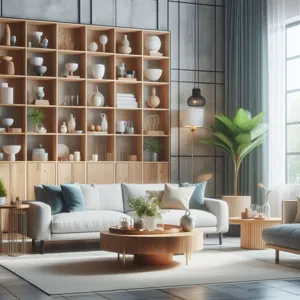
When it comes to selecting furniture for your living room, the color palette you choose plays a pivotal role in harmonizing the overall decor of your home. A carefully curated color scheme not only sets the mood for the room but also creates a cohesive flow throughout your space, making it feel inviting and well thought out.
Start by assessing the existing colors in your living room. Take note of the wall paint, flooring, and any prominent decor elements like artwork or drapery. Are your walls painted in warm, earthy tones, or do they feature cool, calming shades? Understanding your base colors will help you select furniture that complements and enhances the ambiance of the room.
Once you have identified your primary colors, consider how the furniture will interact with them. For a timeless look, opt for neutral furniture pieces—think soft grays, beiges, or whites—that can seamlessly blend with any decor style. These classic choices provide a versatile backdrop, allowing you to play with colorful throw pillows, rugs, and accessories that can be easily swapped out as trends change or your taste evolves.
If you’re feeling bolder, don’t shy away from using vibrant hues in your furniture selection. A deep teal sofa or a mustard yellow armchair can serve as a stunning focal point, drawing the eye and sparking conversation. Just be sure to balance these bold choices with complementary colors found elsewhere in the room to prevent overwhelming the space.
Lastly, consider the mood you want to evoke. Soft pastels can create a serene and calming environment, while rich jewel tones can add a sense of luxury and warmth. By thoughtfully pairing your furniture colors with the existing decor, you can create a living room that not only reflects your personal style but also invites comfort and connection for all who enter. Remember, the goal is to create a harmonious space where every element feels intentional and cohesive.
8. Functionality vs. Aesthetics: Finding the Balance
When it comes to furnishing your living room, the age-old debate of functionality versus aesthetics often takes center stage. While it’s tempting to select pieces solely based on their visual appeal, practicality plays an equally crucial role in creating a space that is both stylish and livable. Striking the right balance between these two elements can transform your living room into a harmonious sanctuary that reflects your personality while serving your lifestyle needs.
Start by considering how you and your family use the space. Do you entertain frequently? If so, investing in a spacious sectional sofa that invites conversation and provides ample seating could be your priority. On the other hand, if you prefer cozy movie nights, a comfortable reclining chair paired with a chic coffee table might be the focal point you need. Functionality encompasses not just seating arrangements but also storage solutions. Look for ottomans that double as storage units or coffee tables with built-in shelving to keep your space tidy without sacrificing style.
However, aesthetics should never be an afterthought. The colors, textures, and shapes of your furniture can dramatically affect the overall vibe of your living room. Choose pieces that resonate with your personal taste—whether it’s the sleek modern lines of a minimalist sofa or the warm charm of vintage furniture. Don’t shy away from mixing styles; a rustic coffee table can add character to a contemporary setting, creating an eclectic look that feels curated yet effortless.
Ultimately, the goal is to create a living room that not only looks stunning but also accommodates your day-to-day activities. By thoughtfully selecting furniture that embodies both functionality and aesthetics, you’ll cultivate a space that invites relaxation and enjoyment, making it the heart of your home for years to come.
9. Storage Solutions: Maximizing Space in Your Living Room
When it comes to furnishing your living room, one of the most crucial aspects to consider is storage solutions. In today’s homes, where space can often feel limited, maximizing every square foot is not just practical—it’s essential for creating a harmonious and clutter-free environment.
Start by assessing your storage needs: what items do you need to store? From books and magazines to toys and electronics, having a clear idea of your belongings will help you choose furniture that serves dual purposes. Consider investing in coffee tables or ottomans with hidden compartments. These multifunctional pieces not only add aesthetic appeal but also provide a clever solution for tucking away everyday items.
Shelving units are another excellent option for maximizing vertical space. Tall bookcases or floating shelves can draw the eye upward, creating the illusion of a larger room while offering ample storage for decorative items, books, or plants. You can also customize your shelving by incorporating stylish baskets or boxes that can hide away less attractive items while adding texture and style to the overall decor.
When it comes to sofas, look for those with built-in storage beneath the seats or armrests. These cleverly designed pieces can hold blankets, pillows, or even board games, ensuring your living area remains organized and inviting. If you frequently entertain guests, a stylish sideboard or console table can serve as both a storage solution and a surface for displaying decor or serving snacks during gatherings.
Lastly, don’t overlook the power of decorative storage options. Stylish bins, vintage trunks, or chic cabinets can serve as focal points in your living room while providing essential storage. By carefully selecting pieces that complement your design aesthetic, you can maintain a cohesive look while keeping your space functional.
In conclusion, focusing on storage solutions when choosing furniture for your living room not only enhances the room’s functionality but also elevates its style. With thoughtful planning and the right choices, you can create a living space that is both beautiful and practical, where everything has its place and clutter becomes a thing of the past.
10. Accessorizing: The Role of Rugs, Art, and Decor
Accessorizing your living room is where the magic truly happens; it’s the finishing touch that transforms a house into a home. When it comes to furniture, the right accessories can elevate your space, adding depth, personality, and warmth. Rugs, art, and decor serve as the vital elements that tie your entire aesthetic together, creating a cohesive and inviting atmosphere.
**Rugs** are more than just floor coverings; they define spaces and add layers of texture to your living room. A well-chosen rug can anchor your seating arrangement, providing a plush foundation for the room. Whether you opt for a bold pattern that makes a statement or a subtle, neutral hue that complements your furniture, the right rug can enhance the overall design. Consider the size and shape carefully—too small, and the room may feel disjointed; too large, and it can overwhelm the space.
**Art** is another essential element that infuses your living room with character. It reflects your personal tastes and interests, serving as a conversation starter for guests. Large canvases can act as focal points, while smaller pieces can be arranged in gallery-style displays, creating visual interest on your walls. Choose artwork that resonates with you—whether it’s a stunning landscape, abstract pieces, or family portraits—and don’t forget to consider the color palette to ensure it harmonizes with your furniture.
**Decor** encompasses a wide range of items, from decorative pillows and throws to vases and books. These elements allow you to showcase your unique style and add personality to your space. Layering textures through fabrics, incorporating natural materials like wood and stone, and adding greenery with plants can create an inviting and lived-in feel. Remember to balance functionality with aesthetics; decorative items should enhance the room’s beauty without causing clutter.
Ultimately, accessorizing your living room is about creating an environment that feels both stylish and comfortable. It’s an opportunity to express yourself and make the space truly your own. By carefully selecting rugs, art, and decor, you can craft a living room that not only looks stunning but also invites relaxation and connection—a place where memories are made and cherished.
11. Budgeting for Your Living Room Furniture
When it comes to furnishing your living room, budgeting is a crucial step that can make or break your design plans. Establishing a clear budget helps you navigate the myriad of options available, ensuring that you make informed choices without overspending. Start by assessing how much you’re willing to allocate for this space; consider not only the cost of individual pieces but also potential delivery fees, assembly costs, and any additional accessories you might need to complete the look.
Once you have a budget in mind, prioritize your purchases. Identify the essential pieces that form the foundation of your living room—think sofas, coffee tables, and entertainment centers. These items often carry the most significance in terms of both function and aesthetic appeal, so it’s worth investing a bit more for quality.
Don’t forget to account for lesser-known items that contribute to the overall comfort and style, such as side tables, lighting fixtures, or throw pillows. These may seem like small expenses, but they can add up quickly. Consider creating a tiered budget that allocates a specific percentage for each category of furniture. This structured approach not only helps you stay on track but also allows for flexibility—if you find a stunning piece that’s slightly above your initial target, you may be able to reallocate funds from another area without breaking the bank.
Lastly, keep an eye on sales and promotions, especially during holiday seasons or clearance events. Many retailers offer significant discounts that can help stretch your budget further, allowing you to upgrade your selections or add an extra decorative touch without guilt. By carefully planning and sticking to your budget, you can create a beautiful and inviting living room that reflects your personal style while remaining financially sound.
12. Where to Shop: Online vs. In-Store
When it comes to selecting the ideal furniture for your living room, one of the pivotal decisions you’ll face is where to shop: online or in-store. Each option has its unique advantages and drawbacks, so understanding the nuances can help you make an informed choice that best suits your needs.
**Shopping Online**
The online shopping experience offers unparalleled convenience. With just a few clicks, you can browse an extensive array of styles, materials, and price points from the comfort of your home. Online retailers often feature user-friendly websites that allow you to filter options based on your specific criteria—be it color, size, or budget. Additionally, many sites provide customer reviews and high-resolution images, giving you a clearer picture of what to expect. Another significant benefit is the ability to easily compare prices across different platforms, ensuring you get the best deal possible. However, the downside is that you can’t physically interact with the furniture. You miss out on the tactile experience of feeling the fabric, assessing the comfort level of a couch, or visualizing how a piece fits in your living space.
**Shopping In-Store**
On the other hand, shopping in-store offers a sensory experience that online shopping simply cannot replicate. Walking through a furniture showroom allows you to see, touch, and test pieces firsthand, giving you a better sense of the scale and comfort of your selections. You can appreciate the craftsmanship in person, which is particularly important for items like sofas and dining tables that you want to last. Additionally, knowledgeable sales associates can provide personalized assistance, answer your questions, and even suggest complementary pieces to enhance your living room’s aesthetic. However, the downside of in-store shopping can sometimes be limited inventory; smaller showrooms may not have the vast selection available online.
Ultimately, the decision of where to shop for your living room furniture often comes down to your personal preferences and lifestyle. Many savvy shoppers find a balance by starting their search online to gather ideas and narrow down their options, then visiting stores to test out their top choices. Whichever route you choose, being well-informed will help you find the perfect pieces to create a cozy and stylish living space.
13. Eco-Friendly Furniture Options
In today’s world, where sustainability has become a cornerstone of modern living, eco-friendly furniture options are not only a responsible choice but also a stylish one. When selecting pieces for your living room, consider furniture made from reclaimed wood, bamboo, or sustainably sourced materials. These options not only minimize environmental impact but also add unique character to your space. Reclaimed wood, for instance, carries a history and charm that new materials simply can’t replicate, often showcasing beautiful grain patterns and textures that tell a story.
Another significant aspect of eco-friendly furniture is the use of non-toxic finishes and adhesives. Many manufacturers are now prioritizing low-VOC (volatile organic compounds) materials, ensuring that your living room not only looks good but also contributes to a healthier indoor air quality. Brands that focus on sustainable practices often highlight their commitment to the environment, which can give you peace of mind knowing that your choices support responsible production methods.
Additionally, consider investing in furniture that is designed to last. Quality over quantity applies here—rather than filling your space with trendy pieces that might need replacement within a few years, opt for timeless designs that will withstand the test of time, both in durability and style. Many eco-friendly furniture options also come with customizable features, allowing you to tailor pieces to your specific needs while reducing waste.
To elevate your living room further, look for furniture upholstered in organic fabrics, such as hemp or certified organic cotton, which are free from harmful chemicals and dyes. Not only do these materials feel good against your skin, but they also align with a sustainable lifestyle.
By choosing eco-friendly furniture options, you’re not just enhancing your living room’s aesthetic appeal; you’re making a conscious choice to protect the planet. Embrace these sustainable solutions and create a space that reflects your values while remaining inviting and stylish. Your living room will be a haven of comfort, creativity, and environmental responsibility.
14. Maintenance Tips for Your Living Room Furniture
Maintaining your living room furniture is essential not only for preserving its aesthetic appeal but also for extending its lifespan and functionality. Here are some practical tips to keep your furniture looking as good as new, ensuring your living space remains inviting and stylish.
**1. Regular Cleaning:** Dust and dirt can accumulate quickly, so make it a habit to dust surfaces weekly using a soft, lint-free cloth. For upholstered furniture, a vacuum with an upholstery attachment can effectively remove crumbs and debris. Don’t forget to check the manufacturer’s instructions for any specific cleaning guidelines.
**2. Protect from Direct Sunlight:** Sunlight can fade and damage fabrics and finishes over time. Position your furniture away from direct sunlight whenever possible, or invest in UV-filtering window treatments to shield it from harsh rays.
**3. Use Coasters and Placemats:** Prevent scratches and stains by placing coasters under drinks and placemats under dishes or decorative items. This simple step can save you from having to deal with unsightly rings or heat marks on your surfaces.
**4. Address Spills Immediately:** Accidents happen! If a spill occurs, quickly blot the area with a clean, dry cloth to absorb as much liquid as possible. For fabric furniture, use a specialized upholstery cleaner or a mixture of mild soap and water, testing any cleaning solution on a hidden area first.
**5. Rotate Cushions:** For sofas and chairs with removable cushions, make it a practice to rotate them regularly. This helps distribute wear evenly and maintains their shape, preventing sagging over time.
**6. Check for Loose Parts:** Periodically inspect your furniture for any loose screws, hinges, or joints, especially in wooden pieces. Tightening these components can prevent further damage and maintain stability.
**7. Use Furniture Polish Wisely:** For wooden surfaces, a good-quality furniture polish can help restore shine and protect against scratches. However, avoid over-polishing, as this can create a buildup that dulls the finish.
By following these maintenance tips, you can ensure your living room furniture not only retains its beauty but also provides comfort and functionality for years to come. Remember, a little effort goes a long way in keeping your space looking its best!
15. Final Thoughts: Creating a Comfortable and Inviting Space
When it comes to creating a comfortable and inviting living room, the journey begins with understanding your personal style and the functional needs of your space. Your living room is more than just a collection of furniture; it’s a sanctuary for relaxation, a gathering spot for family and friends, and a reflection of your unique personality. As you finalize your choices, consider the balance between aesthetics and comfort.
Start by selecting pieces that not only look great but also feel great. Plush sofas, soft throws, and well-cushioned chairs invite your guests to sink in and stay awhile. Integrate textures, such as a cozy area rug or knitted poufs, to add warmth and depth. Don’t forget about the importance of lighting—layered lighting from various sources, including floor lamps, table lamps, and dimmer switches, can create a welcoming ambiance that adapts to different moods and occasions.
Moreover, think about the flow of the room. Arrange your furniture to encourage conversation and movement, ensuring there’s enough space for guests to navigate comfortably. Incorporate personal touches through artwork, family photos, or cherished collectibles, which can spark joy and tell your story, making the space feel distinctly yours.
Finally, don’t overlook the importance of greenery. Adding houseplants not only purifies the air but also brings life and vibrancy to your living room. As you step back to admire your work, remember that the perfect living room is one where comfort meets style, creating a harmonious environment that invites everyone to unwind and enjoy. With thoughtful planning and a dash of creativity, your living room can become a true haven—a place where memories are made and cherished.
As we wrap up our ultimate guide to choosing the perfect furniture for your living room, we hope you feel inspired and equipped to create a welcoming and stylish space that reflects your unique personality. Selecting the right furniture is not just about aesthetics; it’s about functionality, comfort, and harmony within your home. Remember to consider your lifestyle, the size of your space, and your design preferences as you explore your options. Whether you prefer a contemporary look or a more traditional vibe, the right pieces can transform your living room into a cozy retreat for relaxation and connection. We’d love to hear about your furniture choices and how they enhance your living space—don’t hesitate to share your experiences in the comments below! Happy decorating!

